Next month (May 2024), SpaceX will launch the fourth orbital launch test of the Super Heavy Starship. It will try to land a virtual tower.
Elon thinks a successful Mechazilla tower catch is 80-90% for this year.
IF that is successful then the fifth flight will try to land on the actual mechazilla tower.
00:00 Aliens & the Fermi Paradox: Are We Alone in the Universe?
01:53 The Urgency of Becoming a Multi-Planetary Species
03:38 The Revolutionary Starship: Making Space Travel Affordable
12:21 Starlink: Bridging Earth and Mars with High-Speed Internet
21:38 The Future of Mars Colonization: Building a Self-Sustaining City
24:34 The Vision of a Million-Year Civilization
27:03 Reflecting on SpaceX’s Journey and the Path AheadThe Robots Are
Elon again talked about the need for human civilization to become multi-planetary and multi-stellar.
Elon talked about terraforming Mars. I have a video that describes how to use about dozen SpaceX Starship to bring nanorods and nanorod factories to Mars to warm up Mars.
This is a serious proposal to warm Mars by 10 degrees celsius before 2050.
A few dozen SpaceX Starships would be ready to bring factory equipment, mining equipment and nuclear or solar energy to manufacture 1.5 million tons of nanorods to warm the atmosphere of Mars by 10 Degrees Celsius by 2050 if we started by 2030.
The identified artificial aerosols would be 10,000 times more effective than prior super greenhouse gases.
They would build 1.5 million tons of nanorods per year to maintain about 10 million tons of nanorods in the atmosphere.
It would be a crude and simple factory that is easy to make.
If we continue to increase the nanorods there is path to increasing temperature by a total of about 50-70 degrees Celsius. The temperature increases would increase water vapor and carbon dioxide and keep an accelerated warming effect. We could get the temperature to about a regular winter on Earth. We could wear air masks for oxygen and regular winter gear for conditions like being on Mount Everest with a very calm but cool day.
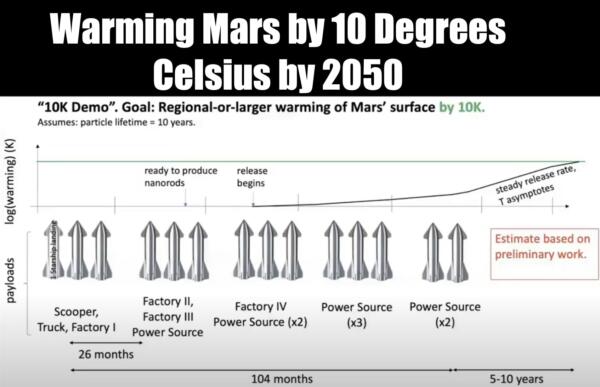


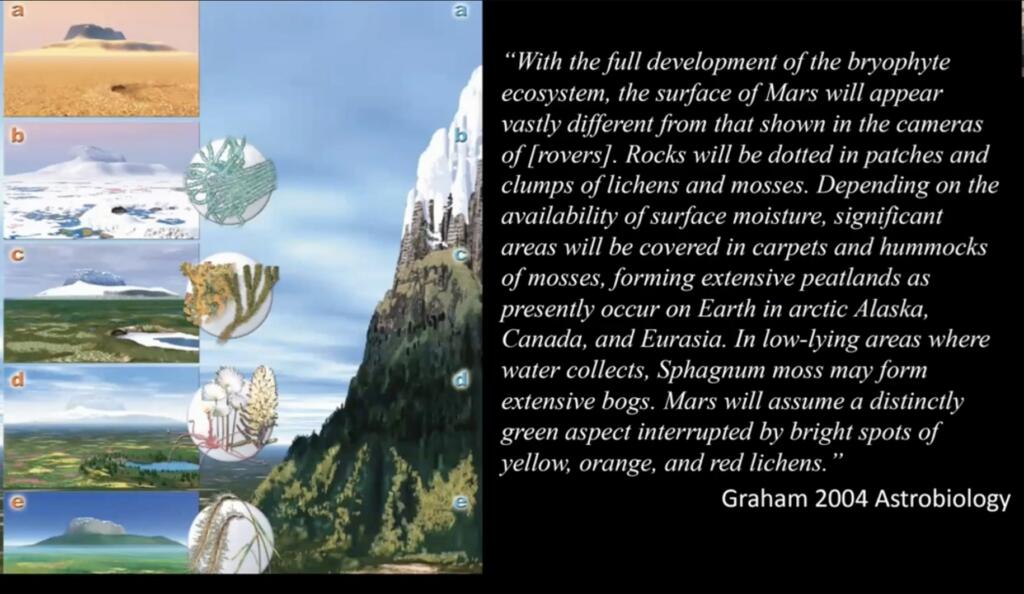
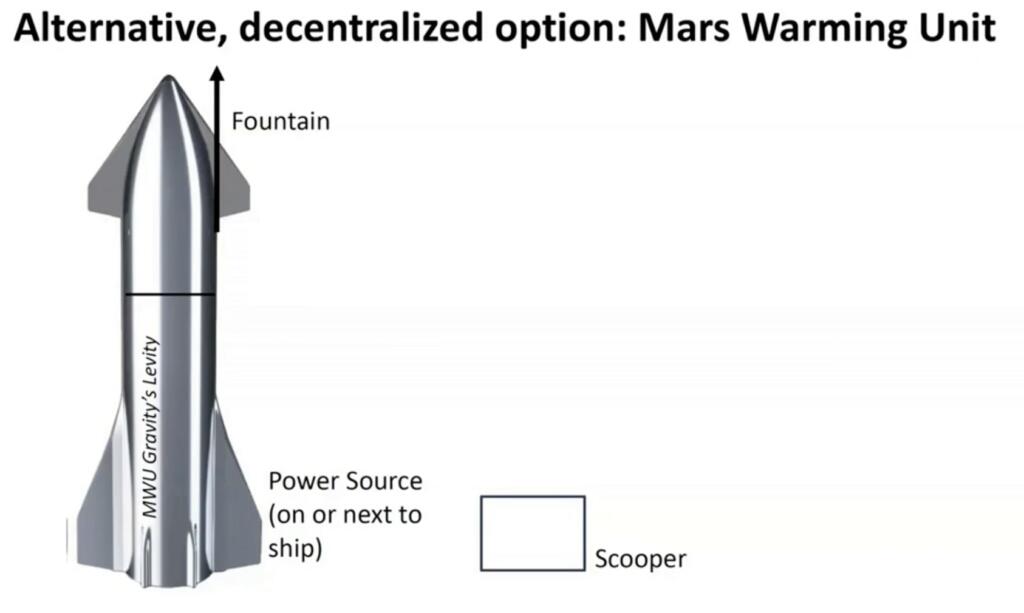
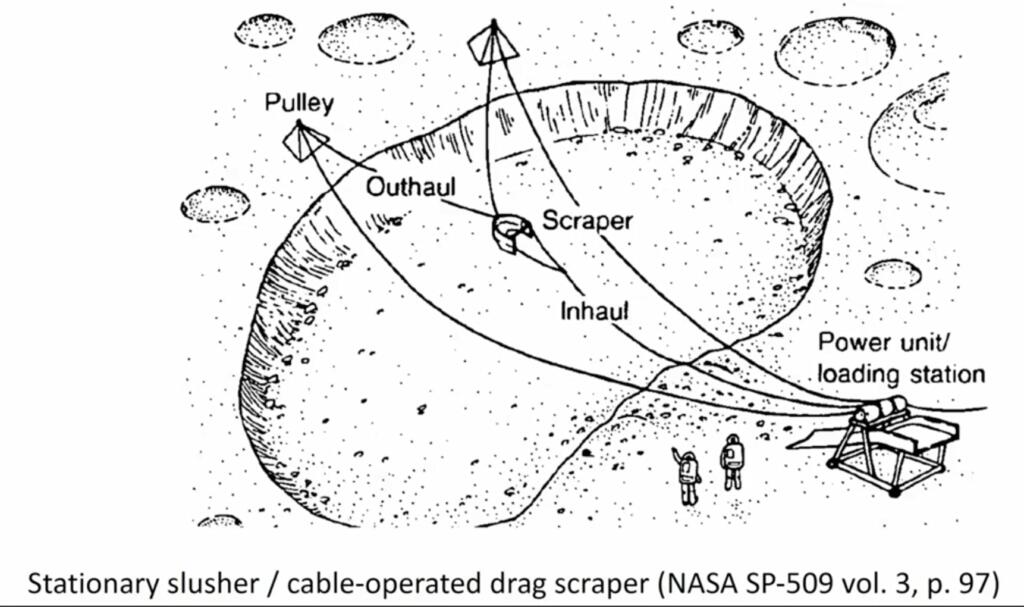

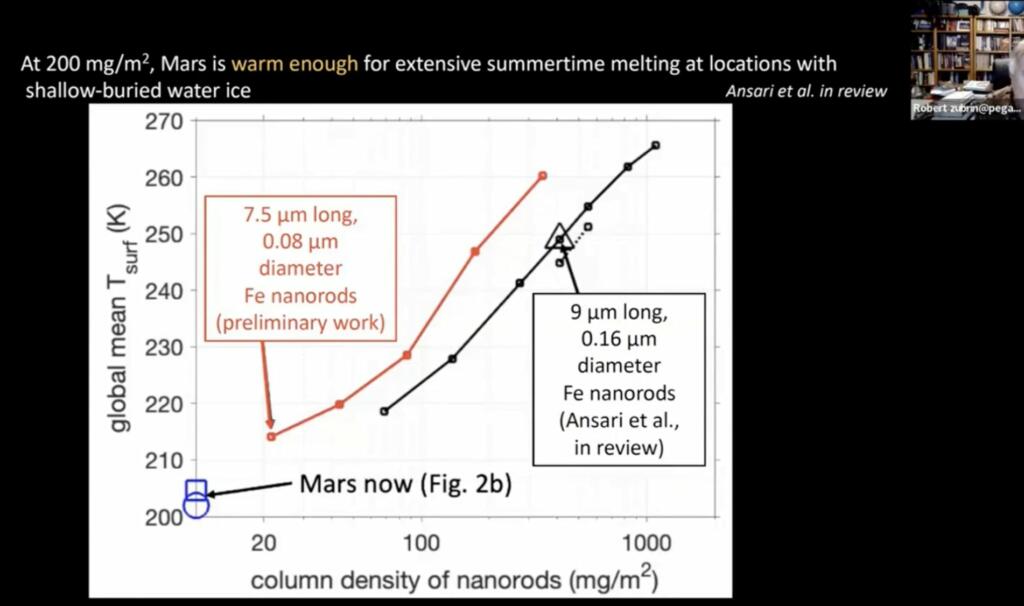

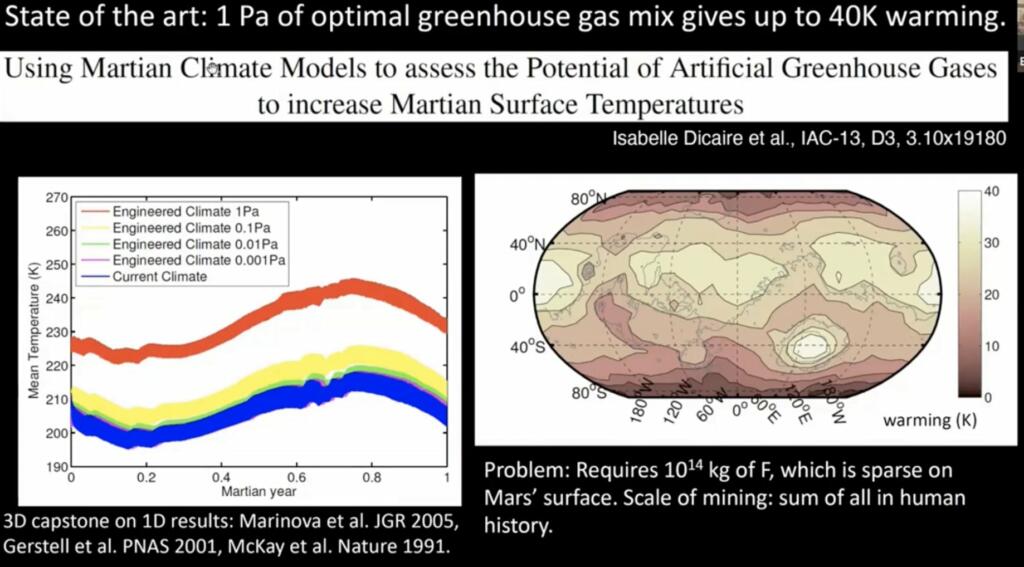



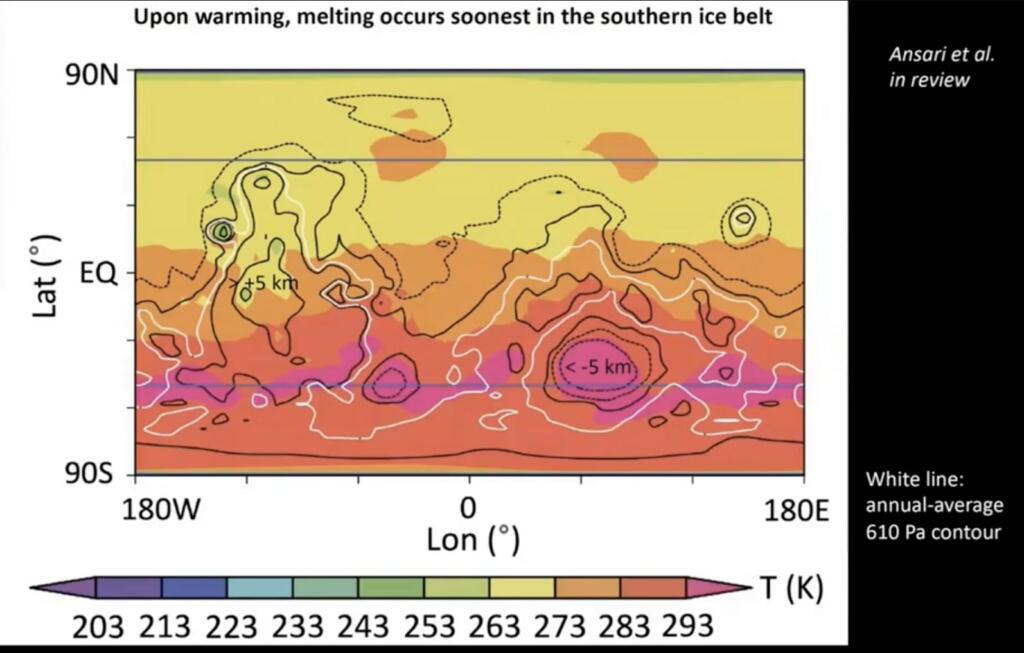

Brian Wang is a Futurist Thought Leader and a popular Science blogger with 1 million readers per month. His blog Nextbigfuture.com is ranked #1 Science News Blog. It covers many disruptive technology and trends including Space, Robotics, Artificial Intelligence, Medicine, Anti-aging Biotechnology, and Nanotechnology.
Known for identifying cutting edge technologies, he is currently a Co-Founder of a startup and fundraiser for high potential early-stage companies. He is the Head of Research for Allocations for deep technology investments and an Angel Investor at Space Angels.
A frequent speaker at corporations, he has been a TEDx speaker, a Singularity University speaker and guest at numerous interviews for radio and podcasts. He is open to public speaking and advising engagements.


The timelines Elon Musk has for Routine trips to Mars are optimistic. That’s normal though. Getting a certified human rating for starship Heavy and the lander and even the refueling hardware (also starship based) will take 10 years optimistically. It took about nine years for Falcon9-Falcon Heavy and the Dragon Capsule to get a human certification after initial successful cargo missions. However, the good news is that Space X learned some ways to speed up the human rating certification process, but going to Mars involves more hardware variations and types than just Falcon and its Dragon Capsule. So ten years is perhaps a little optimistic, but still feasible and doable. Still, warming the Atmosphere by 2050 is not feasible. It would take a hundred or more years to appreciably warm Mars by even 4 or 5 deg C. Starting by 2050.
Then what?
You still have to create an expensive magnetic bubble around Mars to keep the new atmosphere and liberated water from being stripped off by the solar wind. Parking a small moon in orbit might restart internal convection enough to do the trick but nobody has any idea how to move that much mass that far. The other option is an expensive external satellite which would require constant maintenance and is thus vulnerable to several points of failure.
And then there’s the gravity problem. Far too much human chemistry goes awry outside Earth’s standard gravity. There’s simply no way to fix it, so no one will be moving to Mars or any other low gravity environment for any length of time without horrendous health impediments.
Some have suggested using centrifugal force to mimic the effects of gravity, but this is much cheaper to do in a spinning space station than on the ground so why not just live in space if this method works? Even if it does work, you might have to spin all day long for the best effects and you’ll never be able to accomplish this easily in great numbers for an entire civilization on a planet.
Spinning may not work. Spinning may not be functionally equivalent to gravity for our biological tissues. This approach assumes there is no special quantum effect to living in a gravity well. We could get very sick when we’re removed from this essential, relativistic element of nature. Though there isn’t any evidence yet to support this idea, a subtle and salubrious gravitational effect on our health would fit with a broad pattern throughout human history in which we ditch elements of nature as unnecessarily troublesome only to have it bite us in the ass later: fiber in the diet (diabetes, cancer), helminths in the gut (autoimmunity, allergy), sunshine (internal organ cancers and dementia). All of these outrageous injuries have been met with iatrogenic medicine – i.e., medicine that makes you sick so you’ll need the medicine. For instance, the COX-2 inhibitors sold to arthritis patients actually cause arthritis with regular use by damaging the ability of chondrocytes to repair normal erosion in joints. We knew this in the ’90s, by the way.
Even assuming you got rid of the perverse incentives in American healthcare, fixing our gravitational maladaptation with medicinal chemistry would require possibly centuries of expensive experimentation while incurring high casualty figures. I’ve looked at NASA’s analysis of microgravity’s effects on human biology. There are simply too many systems going awry for any simple chemical fix. That type of precision control is nowhere on the horizon. Of course, given enough time and death, evolution would solve this problem for our descendants – but then they’d be trapped on worlds with Mars-standard gravity.
I’m all in favor of sending out people to explore the solar system, but generations aren’t going to be living out there – not for a long, long time anyway. Musk can lick every other problem facing this endeavor, but he’s still got to contend with the same gravity pulling him back to terra firma that rest of us do.
No, you don’t need to deal with the atmosphere being stripped away on a human timescale. It’d take tens of thousands of years to reduce by an appreciable amount, so either humans are extinct or so advanced building a magnetic deflector satellite at L1 is trivial.
The gravity, literally no one knows what happens in 0.4 g. It has never been tested, and “analogs” like lying in bed for varying durations per day just aren’t complete enough. 0.1 g may be enough for total function, it may be 0.9 g. We just don’t know. You say you’ve looked, but clearly you haven’t read beyond abstracts because there is nothing beyond speculation.
Right, on both counts. If we were able to quickly restore an atmosphere to Mars, we’d have many centuries to do something about producing a magnetic field to protect it.
And actually building a partial gravity rotating station in orbit ought to be one of Musk’s early steps before actually trying to colonize Mars.
So far he hasn’t really don’t anything that would be wasted if full gravity would be needed for health. He can just change the plan, and build O’Neill colonies, instead. The rockets he’s building now still contribute.
Yeah, we really need to test a couple of astronauts for a couple of months in a small rotating-tethered hab in Earth orbit, to project the healthy impacts of Mars gravity.
Might even be a good use for the ISS when they’re ready to decommission it – use part of it as a counter-weight instead of crashing it in 2030. As a counterweight to a 13 ton hab, ISS would only experience about 1% of 1G, which it might handle without modification.
Never say never. At least he is a forward thinker instead of sitting on his hands while the warmongers and liberals are here trying to kill everyone on this planet and send us into economic starvation through taxation without representation. If a man don’t grow, he dies. That’s a very old saying. I believe it and this planet is dying. Not through man made climate change but through normal Evolution. Yes we are effecting it about 3 percent and we need to study alternative power sources like fusion and nuclear fission. I think fission is safe if operated according to the guidance set by the regulatory commission. France has proven that. No major incidents in 50 years of Nuclear power generation. Yes there is waste but it can be reprocessed. We just have to do it.
Once he gets the pricing down, then others can afford to build space stations and O’Neal type habitats which I agree make more sense than going into any gravity well. The key is access, Musk himself can do anything he wants with access but others too.
No Elon… You got it wrong AGAIN….
1 million isn’t needed or millions of resources…
I agree.
I’ve estimated that a colony with 100 people could be about 99% self-sustaining, as measured by measured by mass of deliveries versus mass of new goods consumed. That’s not even including consumption of recycled air and water or the Mars soil used to shield habitations, which would make 99% trivial to attain. It would include the bulk of their food, fuel and oxidizer to power mobile equipment and supply back-up power for duststorms, as well as construction materials, machined replacement parts, etc. Earth shipments would be luxury goods, specialized materials, high tech electronics, medicines, Mars-rare elements, etc.
Somewhere between 1000 and 10,000 people, a colony could become fully self-sustaining if they focus on using ‘low tech’ everywhere possible, plus a thin slice of modern tech that can be done on Mars at a small scale without complex supply chains. Their risk of collapse due to some natural disaster might be high, but could fall as population grew and redundancy increased.
Energy is going to be their biggest problem, as they’ll need a plentiful supply. Nuclear is the obvious option for bootstrapping, but getting to long term sustainable nuclear power will be difficult, barring development of ‘easy-bake’ fusion power. My projection is that they’d use concentrated solar stirling engines driving electric generators, storing a lot of methane and oxygen to run those same engines at a much reduced energy level during dust storms.
Of course, I suspect that while a colony COULD become self-sustaining, they wouldn’t, as it’ll be easier to trade Mars scientific data and entertainment content for small-volume shipments from Earth. AI and robots will soon allow a much smaller colony to be very close to self-sustaining, while staying at a high tech level. In that case, they should at least consider microwave beamed space solar power, which can easily punch through duststorms, and the power generation hardware doesn’t have to land on Mars. Mars could support a Phobos colony that produces and stores liquid oxygen and maybe methane, to greatly reduce the amount of fuel needed to get to and from Mars surface. Mars to be spacefaring right from the start, more quickly boosting humanity on out toward the asteroid belt.
Just hope we can start a new civilization wihout any gods and firearms.
We can’t. Atheism has firearms, it just retains them for the state. It’s worked out for us so well since Marx too.
People don’t own fireams in the most atheist countries.
When humans migrate into the solar system, some will take their stupid religious and political beliefs. That is inevitable unfortunately.
Because everyone will turn into a hippie and sing Kumbaya?
They’ll need very strict law enforcement to deter crime, unlike us with the luxury of an atmosphere and living ecosphere, in space any vagrancy and vandalism can get all of them dead.
We know that a small minority make most of the crime. That minority has to be promptly removed from the civilization they want to kill. By shipping them back to Earth or as I suspect they will, by removing them altogether from existence.
I agree. Why one city? Let’s assume Elon / SpaceX will really send fleets of 1’000+ Starships 3.0 with 275 tonnes cargo capability every 26 months to Mars as a starter. One alternative would be to have around 200 people from all walks of life – covering all capabilities needed for operating a basic settlement – aboard each Starship and land each one at a different location on the surface of Mars; thus basically founding thousands of cities equidistantly all over the surface of Mars simultaneously.
Within 2 or 3 decades from commencing such full-scale colonization you would basically have the entire planet flourishing and all these cities being connected via hyperloop lines. I believe more in rapid Para-Terraforming / by which I mean Indoor-Terraforming below geodesic domes or in sealed subterranean settlements in lava tubes etc. as the most viable option for large-scale and immediate all-encompassing colonization and industrialization of Mars and literally zillions of other rocky planets, dwarf planets, moons and even asteroids across the Greater Solar System.
I also wonder about that. I think people having children in a new place like that will be what sustains population, rather than emigration from Earth.
How fast people reproduce is another story. I do agree that large scale urbanization is a key component of population decline in the long run. Of course, that kind of urbanization on Mars will likely take a very long time.
Then again, humans are nothing if not determined when they crave a specific standard of living. If they want sprawling cityscapes with fast McDonald’s and Hot Topic on Mars, they’ll make it happen. If Buc-ee’s opens on Mars, I’m going there!
I could be wrong about this because I don’t know enough about the history of conquest, but I always felt larger ancient civilizations on Earth flourished by way of conquering other populations to add to their empires. Meaning it wasn’t always birth rates “at home” that grew their empires. Mars won’t have that. It’ll all be dependent on settlers.
Polluting the atmosphere with nanorods is not a desirable method, the unintended consequence of clogging plant pores thus suffocating them defeats the whole point of creating a self sustaining atmosphere. If you have to pollute the atmosphere to create it, then it stands to reason you have to continually pollute it to maintain it, otherwise there would already be an atmosphere.
As I understand it, ground temps have to be above 40 F for most plant root growth to occur. It would be better to bio-engineer lichen and fungi to be dark green and fast growing to heat the ground directly to form a self sustaining process. Start in Hellas Planitia where it already is 12 to 14 millibar as an incubator for the whole planet. Creating a limited area of habitability at first meets everyone’s need to teraform for the long-term. Sprinkle in tundra plants again bio-engineered dark green.
Meh. No one cares about plants or outdoor agriculture by the time that this gets going. Warming the Mars’ surface so that the capitalist investors for the various hotels, research facilities, second+ homes, and touristy developments to say: -20, is sufficient to attract widespread building and entice those in the top 1% who wish to have an extra-earth experience without being in a space station or a lunar-rated space suit, ideally for many, many months. By the end of this century, pristine, natural Earth will be less than double-digit% of all dense ecosystems, with remaining areas under conservation protection, more as museum pieces, than as functional natural environments; already replaced by man-made improved and outstanding equivalents such as at the mangroves, jungles, temperate forests, and savannahs. ‘Nature’ness will be an obsolete concept by 2100+ and there will certainly be no interest off-planet for such carbon-based plant life excess.
(yes, this was a ridiculous, evily-cartoonish take on the future)
Not convinced that you actually need 1-million people to have a self-sustaining, essentially-isolated, extra-earth colony; in the sense of minimum complexity, skill/knowledge robustness, and genetic variety. There are a multitude of papers on efficient, tight, resilient, and pro-growth ‘starting-from-scratch’ ‘population/ demographic’ targets. A primarily underground and widespread warren with dense near-surface pockets with their own outside access provides unlimited growth, high protection, frequent access, and less dependence on surface structure integrity. I doubt that agriculture will be outside-based, that procreation will be ‘family-unit’-driven, and that a comfortable/safe surface condition will be achieved for centuries — so all traditional urban planning, second-earth dreams, and wild-west frontier values can be discarded at the outset. A widely-distributed, mostly-sub-terranean (sub-martian?) research campus may be the best planning model – then duplicated to life-strategic regional locations spaced at 100s of miles increments for redundancy/ trade.
Honestly. It’s likely to be a long-term tourist/research destination over a colony. With life spans of over 120 years, with 80+ years robust health, near the end of the century for 20% of first-worlders, Star-Cruiser flights of 6 to 15 months each way and a few years to a decade+ of ‘visiting’ will be very desirable. Warming the atmosphere to above -20 at noon/ summer (not sure how martian seasons work, if any) will be very attractive in short jaunts (with the martian ‘atmosphere’? on your face) – no one cares abouts plants or outdoor agriculture. Keep the price at half of a top 10% house in 2050 – say $2M and there will be many customers.
Whenever I hear about living on Mars it amazes me I don’t hear about building huge space colonies so much closer to Earth. We can do this now, quicker then getting “en-mass” to Mars. At least in any numbers. (people wise) We can use resources from near Earth asteroids, and the moon to build massive stations right now. We have the ability, right now. Lets do it.
Agree. And we can also make it 1G which eliminates a lot of problems.
It’s a ‘life raft’, remember? The purpose of the colony is so that humanity survives if something major wipes out human life on Earth.
O’Neill colonies in Earth orbit won’t serve that purpose, they would inevitably NOT be self-sufficient, because Earth would be too close for that to be an economically sane objective. They’d be critically dependent on trade with Earth.
And they’d be close enough that most extinction level events on Earth would take them out, too. A major asteroid strike would throw up enough orbital debris to kill anything as near as the Moon, travel times in the days would allow deadly pandemics to spread to the colonies before the carriers got sick, they’d get sucked into any global nuclear war…
Mars is far enough that self-sufficiency would make economic sense, and to not be taken out by an Earth extinction event.
If Mars’ surface gravity is too low, O’Neill colonies in orbit around it. Phobos and Demos would provide plenty of construction material, and Mars would be close enough for people to do work visits, and high bandwidth teleoperation of machinery there.
That ‘life raft’ can have a low-thrust, high-impulse motor to reach whatever orbit is considered “safe”. Putting a station at terran L4 and L5 requires absolute minimum delta-V (orbit phase shift only), and orbit keeping there also requires tiny delta-V t compensate for disturbances, but getting there would take quite some time at low delta-V – ideal for a space faring city taking its sweet time, bad for any missiles. 30 million km from Terra is far enough to be safe harbour, it still gets terran insolation, and a big ‘life raft’ would have no problems making 1g and whatever fractions in “Babylon-4” configuration.
Unlike a space city floating in the void, hitting a Mars surface target is comparatively easy for a determined agent – precisely known Mars orbit, very thin atmosphere, simple heat signature targeting (cold surface, warm Mars base), and a few ablation-shielded kinetic warheads coming at over 5km/s. Boom-boom-boom.
Babylon 4 got sent back through time roughly a thousand years. Not sure that’s the effect you’re after.
I think it’s a mistake to think of a colony as a “life raft” from Earth. We need to think of it as another community from Earth. Just as new nation states broke off from larger ones to become new nations, human colonies in space will become indepentent “states” have enough people to make it so. What that population density is, I have no idea. But it Will happen.
By the way (IMO) the “nation state” concept on Earth as a practical entity ceased to exist at least 40 years ago. We now live in a world of trans-national corporations, trans-national interests, and trans-national money. Roll over, and see who’s sleeping in your bed. Relax, they may be nice (and even better quite good looking) Just deal with it, and move on…
Sign us up. I am a electrical engineer, sy son is a mechanical engineer, my daugter have a Phd in computational chemistry and my wife is in project management
I still think he’s making a mistake planning a “city”.
Every city in history has been a population sink; Humans just don’t reproduce successfully at high population densities. In fact, the birth dearth is probably due to how urbanized the world has become.
And a lifeboat colony needs a population that reproduces.
One of mistakes. The bigger one is his way of making life multi-planetary is the hardest and riskiest of all options. The error is in the problem formulation: make a million rockets, and keep said life bolted down to a planet, and not a very good one at that. If he has a million tons on Mars, by his own metric it is five times more in terran orbit. That is enough to literally build a city in orbit, and if it is so important, it can fly to Mars eventually. But keeping it much closer – in L point for example – would reduce risks, make it much more attractive to skilled people and still get the Mars wish eventually. Lunar base could be the factory for upgrades to the city, and the source of bulk materials. If one can’t make them on Luna, one can’t make them on Mars.
On the subject of reproduction, cities with ~200k population are the best in that. Big cities are sinks, and not because they are big, but because of density. Mars city will be very dense, so it will be like a huge city in terms of reproduction – a sink. Also, once the martians realise they wished themselves into a prison with mandatory life sentence and no escape, their Martian depression will settle in, with a zero interest in procreation and a lot of self-destructive activities. Orbital city would not have that problem.
Whatever I have been funding, you can have it all it’s way more important
People will “reproduce” whenever the spirit moves them. The more people, the more they will (I don’t need to use that word, you get my drift). The more people, in a higher density population, then they will make joy. It’s as natural as math. And as inevitable as people doing what comes naturally. Populations survive and thrive for more complex reasons then population density. But make no mistake, given the opportunity, we humans will **** our eyes out. Despite how “logical” that is or not.
Modern history says otherwise, but I think it more to do with money. Modern day, people can barely scrape by themselves, so the thought of having a kid or 2, boggles their minds. But in under a decade we’ll have AI smarter then us, in a robot body, and we’ll have UBI. So those things will make global population increase. Couple that with various life extension therapies, and in 50 years, we might double our current population. So pushing outwards is the right move. Mars is the most logical long term planet, but obviously we’ve have loads of people also living on the moon, or in the thousands of space stations, and even some other moons or asteroids.
It was a good presentation, I’m always in awe of Musk’s ambitions. Any other companies would be stoked with the current Starship, But Musk is already working on it’s successor.
would it be wise to be pregnant there? would that lead a to human that is unable to come to earth?
I could write a long read, but let’s just say no, it would not be wise.
What the Mars city planners are missing is a simple fact that Mars is a different planet, not another (worse) copy of Terra. Martian atmosphere pressure is equivalent to about 45km altitude on Terra. The peak of neutron flux (produced by galactic ions hitting gas) on Terra is at about 18km altitude, which means on Mars that peak will be inside the top few meters under surface. Neutrons thermalising inside the habitats without rather heavy shielding will be rather bad for adults, much worse for children, and too bad for fetuses. Proton flux is also present. Either all those “city” pictures are wrong, and habitats will be under at least several meters of rock, or life on Mars will be a rather said story biologically. Water can shield from all that very well though, but it has to be covering the top and sides of habitat (or city) by about 0.2m thick layer.
Why not go to Mars and live in aquarium, right.
It’s an open question if humans can reproduce successfully at .38 g. If not mars will always be a population sink, or the future might be in rotating space habitats and mars used for other purposes (industry, farming , tourism etc )